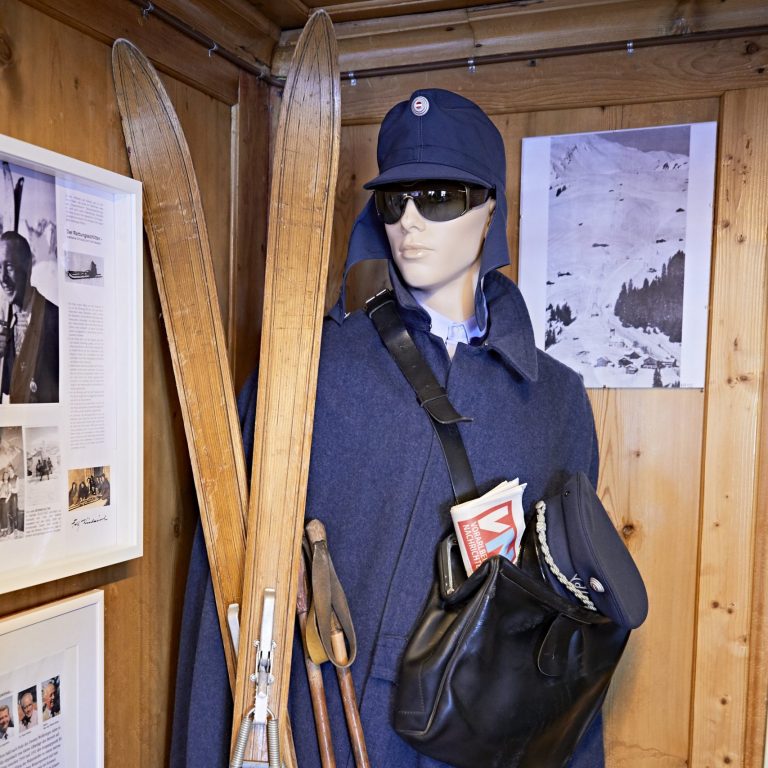
C Ski museum in Damüls © Gert Krautbauer

C Ski museum in Damüls © Gert Krautbauer
...and other anecdotes from the early years of skiing: the ski museum in Damüls in the Bregenzerwald presents its regional winter heroes, skiing farmers and life in the snowy mountains as a commemorative institution that’s also fun.
There’s more snow than you can imagine outside, it towers at least three metres high. And inside Colonel Bilgeri is dreamily staring at you. From a photo taken in 1910. Back then, Georg Bilgeri was not just a popular bachelor but perhaps the most inno vative ski instructor of his time: winter sportspeople owe the stem turn as well as the two-pole technique to him without which no one would ever get down the mountain into the valley today. Colonel Bilgeri came from Bregenz, was a full-time ski instructor for the Austro-Hungarian army and – in 1892 – was the first to give ski courses in Gargellen: a Vorarlberg legend who has faded a little from people’s memories. Someone like that needs to be represented here, of course.
The colonel is not alone.
The FIS Ski Museum in Damüls uses many photos and exhibits to tell the history of the heroes of a time when people traversed the mountains without breathable clothing, smartphones or avalanche air bags. This is where you’ll discover skis from the early days of alpine sports, overlong wooden boards and those lined with seal fur.
And, of course, exhibits whose owners have written winter sports history. The first skis owned by Toni Innauer, for example. Or the original racing skis dating back to the 1950s that were used by Toni Sailer.
The museum in the former vicarage has grown from the private collection of Christian Lingenhöle, who was able to realise his dream of a ski museum with the support of the municipality a few years ago. The collection not only recalls 100 years of skiing history in Vorarlberg – it also keeps the memory of the region’s skiing farmers alive: it’s not so long ago that only a dozen small companies were producing winter sports equipment in Vorarlberg.
The museum’s most beautiful piece, by the way, is a Damüls postman’s uniform. Until a few years ago, the mail was delivered in winter by postmen on skis. Even when the snow was three metres high.